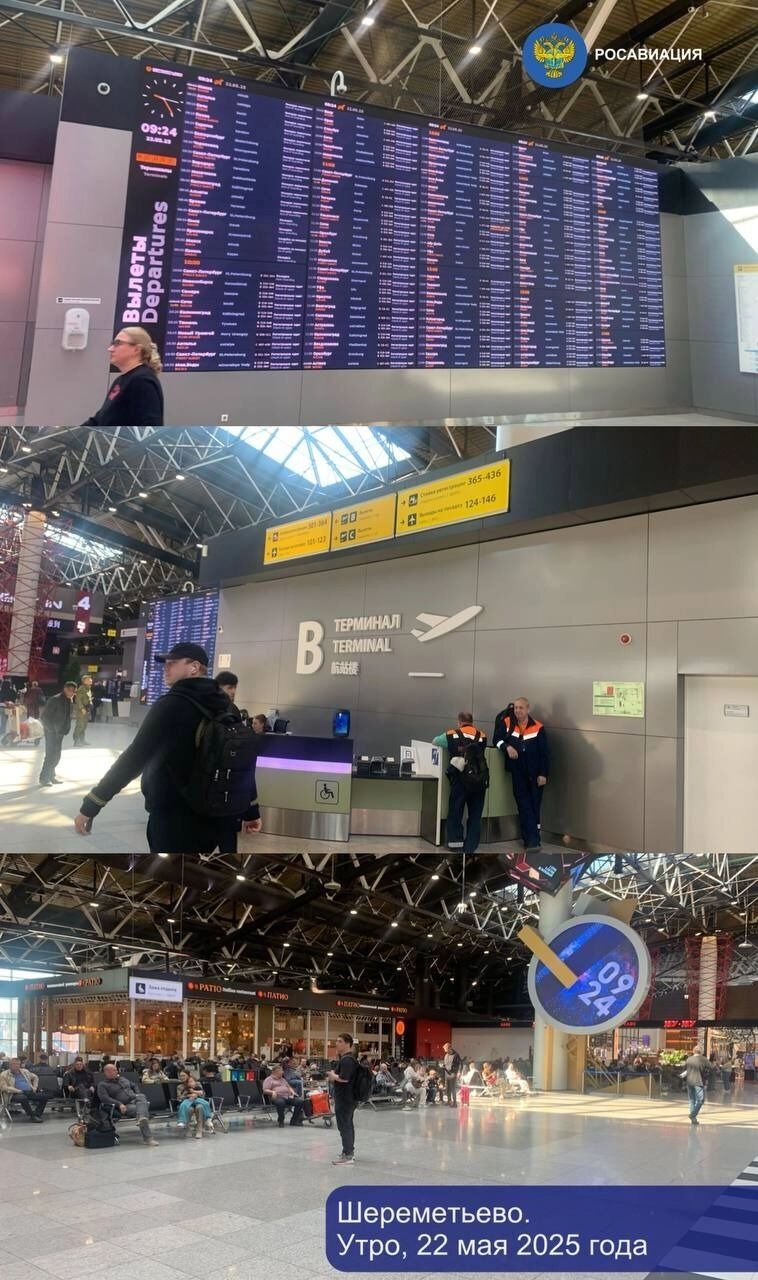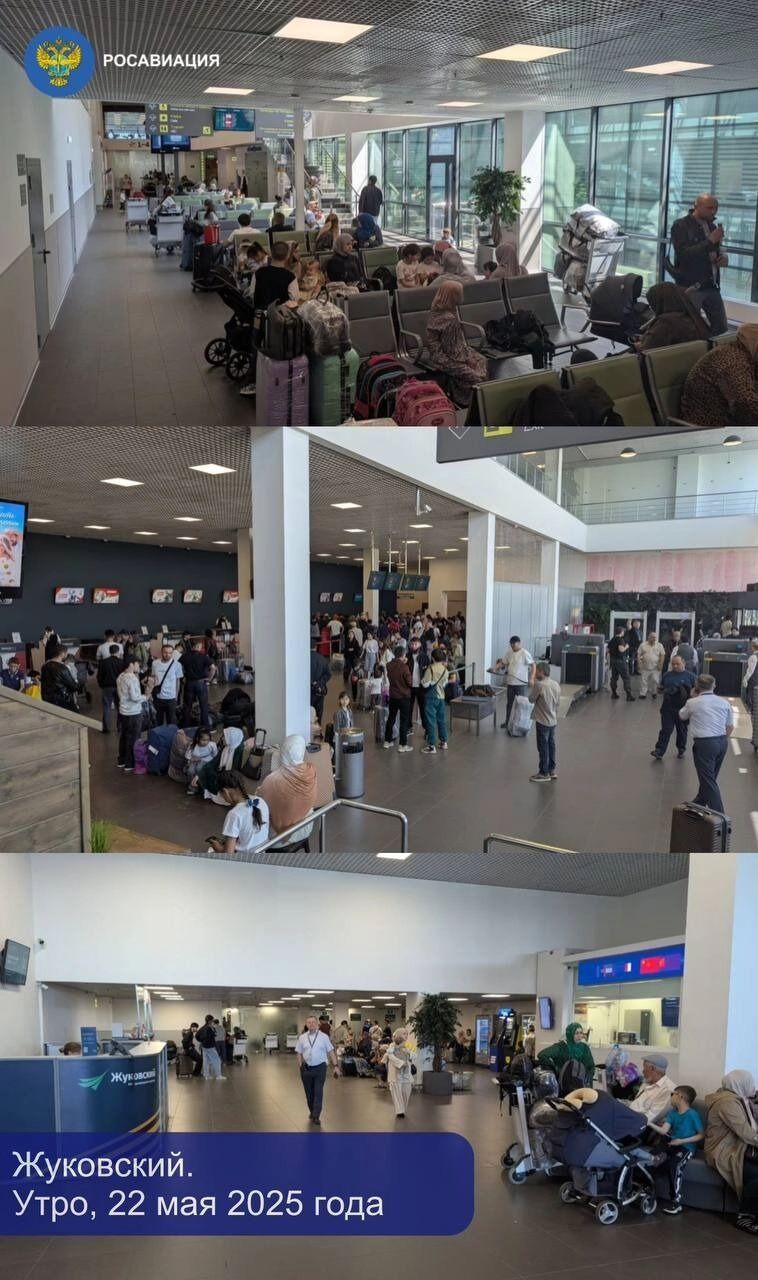Almost 800 UAVs in 2.5 days: consequences and goals of the new tactics of the Ukrainian Armed Forces

The nighttime air defense operation marked the end of a protracted drone attack on Russia. Explosions thundered in the Moscow region, drones attacked a business and a house in Yelets, Lipetsk region, and the Kursk region was subjected to massive shelling. Authorities confirmed information about destruction, more than 20 people were injured.
Over the night, Russian air defense destroyed 112 enemy drones. Most of the air targets were shot down on approach to Moscow — 24 UAVs. Another 22 drones were destroyed over Crimea, 18 — over the Tula region. Judging by the monitoring resources, the raid is over, and information about threats of strikes periodically appears in the border area. Thus, according to the reports of the Russian Defense Ministry, the attack lasted from the evening of May 20 until the morning of May 23.
During this time, Moscow Mayor Sergei Sobyanin reported 24 times that attacks by drones flying toward Moscow had been repelled.
Video: Mash. The moment the UAV was destroyed in the sky over Ramenskoye near Moscow
Tula Region Governor Dmitry Milyaev said that as a result of a protracted drone attack, about 20 residential buildings were damaged in the region, and two local residents were injured - they are in the hospital. Let us recall that one of the UAVs crashed into a residential five-story building the night before.
In Tula, a Ukrainian drone attacked a five-story building. Photo: Baza
A similar situation was repeated this night in the city of Yelets in the Lipetsk region, where a drone attacked a five-story building.
A drone crashed into a residential building in the city of Yelets. Photo: Igor Artamonov
"It has been preliminarily established that 20 apartments were damaged, one of them was damaged more than others. The roof and windows require restoration. The man who lived in the most damaged apartment was not hit by the shrapnel," Governor Igor Artamonov reported early in the morning.
After inspection, it was established that about 30 apartments were damaged.
Video: Lipetsk Region. Consequences of UAV attack in Yelets
Drones attacked an industrial enterprise in Yelets. The Lipetskach Telegram channel publishes a video from eyewitnesses. The source claims that there were several enemy drones. As Mash reports, the UAVs were suppressed by electronic warfare systems, causing them to fall on the territory of the enterprise.
Video: Lipetsk. The moment of the attack on the enterprise in Yelets
The governor said that eight people were injured in the attack. The head doctor of the State Healthcare Institution "Center for Emergency Medical Care and Disaster Medicine of the Lipetsk Region" Alexander Ignatovsky told GOROD48 that all the victims had minor injuries.
Last night, drones were shot down over the Shuya district of the Ivanovo region. The authorities reported no casualties or damage. According to media reports, the target was the Severny airfield , one of the largest military transport aviation bases, and the 112th Guards Novorossiysk Missile Brigade (military unit 03333), armed with Iskander OTRKs, is stationed in the Yuzhny town of Shuya.
The Kursk region has also been restless since the evening, but this was caused not only by drones, but also by massive shelling. The previous evening, a missile strike was carried out on Lgov. Acting Governor Alexander Khinshtein reported 16 casualties, including two children. Four of the wounded are in serious condition.
Video: Alexander Khinshtein. Consequences of a missile strike on Lgov in the Kursk region
"As of 23:00 on May 22, as a result of the attack, 30 private homes were damaged, and windows were broken in 26 apartments (in three apartment buildings). Two stores and a car wash were damaged, and 14 cars and nine trucks were damaged in various ways," he said .
The attack occurred at the entrance to the city, on the Kursk-Rylsk highway. The Investigative Committee opened a criminal case on the terrorist attack . As RIA Novosti reports, citing the military investigation of the Investigative Committee of the Russian Federation, the Ukrainian Armed Forces could have used HIMARS MLRS.
Fragments of the missiles that attacked Lgov. Photo: Alexander Khinshtein
In the morning, the Ukrainian Armed Forces attacked Rylsk. No one was hurt, but the power supply was disrupted due to the attacks.
"As a result of the strikes on private enterprises, the blast wave blew out windows in two administrative buildings, and the double-glazed windows and roofs were damaged in garages and warehouses. One garage building was completely destroyed," Khinshtein reported .
The glazing of two apartments and the gym of the Rylsk Youth Sports School was damaged. The scale of the impact can be understood from the photo from the landing site.
The aftermath of the strike on Rylsk. Photo: Alexander Khinshtein
There were no reports of casualties as a result of the prolonged drone attack, but Belgorod Region Governor Vyacheslav Gladkov reported that a victim who was hospitalized after a drone struck a car on May 19 died in the Shebekinskaya Central Regional Hospital. The day before, a 50-year-old local resident was killed during shelling of the Belovsky District of the Kursk Region. The heads of all border regions, where air defense operations have long ceased to be something unusual, reported injuries to residents over the past day.
The massive drone attack lasted 2.5 days. From May 20 to 23, 788 drones were destroyed outside the special operation zone, according to the Russian Defense Ministry. This puts the raid on par with the record attack of May 6–7.
In order to ensure safety, communications were jammed in many regions - mobile Internet worked intermittently. Citizens had problems with various services and paying for purchases. Taxi rides became much more expensive, and drivers refused to work because navigation was turned off.
For security reasons, temporary restrictions on the arrival and departure of aircraft were introduced at Russian airports. Based on air defense statistics, Moscow became one of the priority targets of Ukrainian drones. During this time, the capital's airports declared the "Carpet" regime more than ten times, which led to disruptions in the schedule.
Video: Shot. Passengers Stuck in Moscow Airports After Drone Attack
Some passengers had to wait for hours for their flights. This time, the collapse of the pre-holiday days did not happen again, but the airports were idle for hours, which could not help but affect air traffic.
The situation at the Moscow air hub airports has been stabilized and crowds have been avoided. Photo: FAVT Press Secretary Artem Korenyako


Experts believe that this was the goal of the Ukrainian military.
"At irregular intervals, from different directions, they launch long-range drones towards Moscow. Both day and night. As a result, air traffic is partially or completely paralyzed and, in accordance with new instructions, mobile Internet is disconnected," notes Fighterbomber .
According to the author of the Telegram channel, such tactics require many UAVs, most of them are shot down during the flight, but even one drone is enough to stop the work of Moscow airports and overload the air harbors of neighboring cities.
“It is not yet clear how critical this is for the normal functioning of the capital, but if (the Ukrainians – Ed.) throw all their drones at this task, something will have to be done,” he added, recalling that he had proposed a similar tactic in the past, but in relation to the enemy.
The Telegram channel “Older than Edda” expresses a similar opinion.
"(The Ukrainians. - Ed.) are trying to spam Moscow airports, this is the main goal of the drone raids, which seemingly have no military value," the author believes.
He suggested that Kyiv's calculation is losses for the Russian Federation due to the suspension and disruption of air traffic. In his opinion, this is also an attempt to force Russia to agree to an unconditional truce for 30 days.
"Well, (the Ukrainians. - Ed.) decided to show that if Russia does not agree to an immediate ceasefire, Kiev will launch hundreds of UAVs daily. The attempt is actually quite pathetic, and despite the huge number of long-range drones launched, our air defense, including the small one, destroyed almost everything launched by the enemy, " Starshe Eddy emphasizes.
One of the targets, the Telegram channel points to the Patriot Park and draws an analogy with the attack on the Moscow City complex.
"Due to the closure of airports, passengers there are having big problems. Earlier, on May 6 and 7, the Ukrainian Armed Forces showed that they can actually block the operation of the Moscow air hub... Such mass raids can become permanent. This is a strong blow. But this is also terrorism," says political scientist Sergei Markov .
In his opinion , Kiev may try to use such raids on civilian airports for bargaining purposes — to exchange their cancellation for part of the Kharkiv region. "Older than Eddy" believes that these actions will lead to increased pressure from the Russian military in the SVO zone and an expansion of the buffer zone, the creation of which was announced the day before by Vladimir Putin. Markov noted that two weeks have passed since the last raid, during which the Ukrainian Armed Forces have accumulated enough UAVs for a large-scale attack.
"The purpose of the attacks is to disrupt Moscow's air traffic with Russia and the world. By doing so, Zelensky is violating an agreement that has been in effect for three years. How will Russia respond?" he asked.
Video: Mash. Ukrainian drone filmed by plane passenger
Political scientist Georgy Bovt does not rule out that the raid could be repeated soon.
"During this time, the Ukrainian Armed Forces have accumulated more than 750 new long-range drones, which managed to almost completely paralyze airports in the European part of the Russian Federation for two days. A bad trend on the eve of summer holidays," he commented on the situation.
The media reported on drones attempting to attack an oil refinery in the Ryazan region, but official sources did not confirm the information. Some sources suggested that the UAVs were trying to break through a corridor to attack Moscow. Bovt believes that an attack could have taken place, and if so, Kyiv did not agree to a moratorium on strikes against energy facilities.
“Perhaps this was done deliberately – with the aim of provoking Moscow into a massive retaliatory strike, in order to then try to make it guilty of another escalation after a relatively successful – for Putin – telephone conversation with Trump,” he explained.
The Rybar project, founded by retired officer of the General Staff of the Russian Federation Mikhail Zvinchuk , noted the day before that during the two-day continuous attack, attempts to strike several industrial facilities and civilian infrastructure were recorded. Problems with mobile Internet are explained by the installation of SIM cards in Ukrainian drones, which can use cell towers when exposed to electronic warfare.
“Judging by the absence of reports of any significant damage on the Internet, this event was beneficial,” Rybar concluded.
Russia's regions are currently returning to normal life after a protracted drone strike. Now that the explosions have died down, questions are coming to the forefront about how long the calm will last, whether such multi-day sieges from the skies will become the new norm, what lessons will be learned, and, most importantly, what will be Russia's response to the new challenge.
newizv.ru



